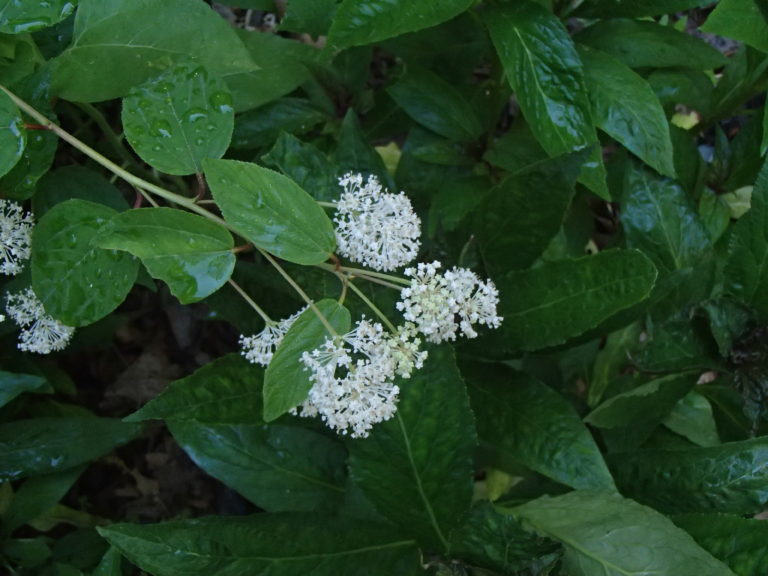New Jersey tea is a compact, deciduous shrub that most often grows to only three feet tall and equally wide. It is common on dry plains, prairies, or similar open areas, on soils that are sandy or rocky, throughout Eastern North America and in the majority of NC counties. Leaves are deep green, serrated, broadly ovate and pointed. The foliage is aromatic, and the common name recalls its use as a tea-substitute in Revolutionary War days. The pure bright white flowers of New Jersey Tea, oval clusters of many tiny flowers, are also fragrant, and showy, occurring in clusters. Requiring little maintenance, New Jersey Tea will thrive in well-drained soil in sun or partial shade and can tolerate drier conditions once established due to its deep, red root system. These deep roots also make the plant difficult to transplant, however. New Jersey Tea is a larval food source for the mottled Dusky-wing, and Spring Azure Butterfly and attracts hummingbirds as well.
NURSERY HOURS
Wednesday: 10-4 Thursday: 10-6 Friday-Saturday: 10-4 Sunday: 12-4
Ceanothus americanus

Key Info
Scientific Name: Ceanothus americanus L.
Common Names: New Jersey Tea, Redroot, Jersey Tea Ceanothus, Mountain Sweet, and Wild Snowball
Family Names: Rhamnaceae (Buckthorn Family)
Plant Type: Tree / Shrub
Leaf Retention: Deciduous
Flower Color: White
Additional Info
Habit: Low, upright shrub with a woody base and herbaceous top, with a massive, deep root system.
Height: 1.5' - 3.5'
Spread: 3' - 5'
Soil Conditions: Well draining soils of coarse to medium sand or loam or rocky material, with pH between 4.5 and 6.0
Leaves: The leaves are alternate or opposite, ovate, with smooth or finely serrated margins, about 3" long x 2" across; they occur along the entire length of each stem. The upper leaf surface is medium to dark green, the lower leaf surface is plighter and pubescent, especially on the veins.
Flowers (or reproductive structures: The sweetly fragrant flowers are bright white, borne in 1- to 2-inch panicles both terminally and from the upper leaf axils of the current year's branchlets. The panicles are longer (2-5") than they are wide (2-3" across).
Fruit: 3-lobed drupe, brown to dark brown; smooth, elliptical, dark reddish brown, ripening in late summer.
Natural Distribution: Dry prairies, hill prairies, sandy savannas, rocky upland forests, limestone glades and barrens,open woods, wood edges, road sides.
USDA Hardiness Zone: 4 to 8
USDA Wetland Indicator Status in NC: UPL
Pollination: Bees, butterflies, other insects.
Wildlife Connections: Nectar and pollen of the flowers attract a variety of insects, especially bees, wasps, flies, and beetles. Beetles, bugs and caterpillars also feed on the leaves, as do mammalian herbivores (deer, rabbits, and livestock) and some upland gamebirds (Wild Turkey and Bobwhite Quail). It is a larval host for the Spring Azure, Mottled Duskywing, Summer Azure butterflies, (Illinoiswildflowers.info/LBJ's wildflower.org)
Propagation: By seeds (60 days stratification) or softwood stem cuttings in June.
